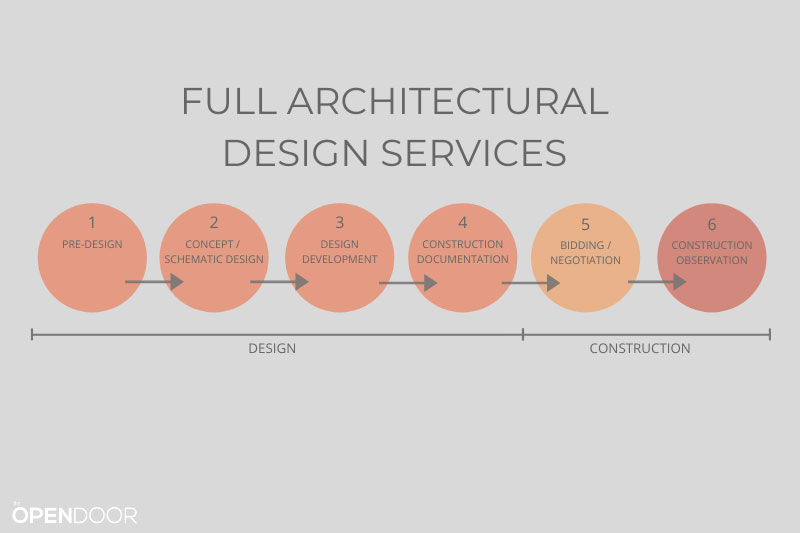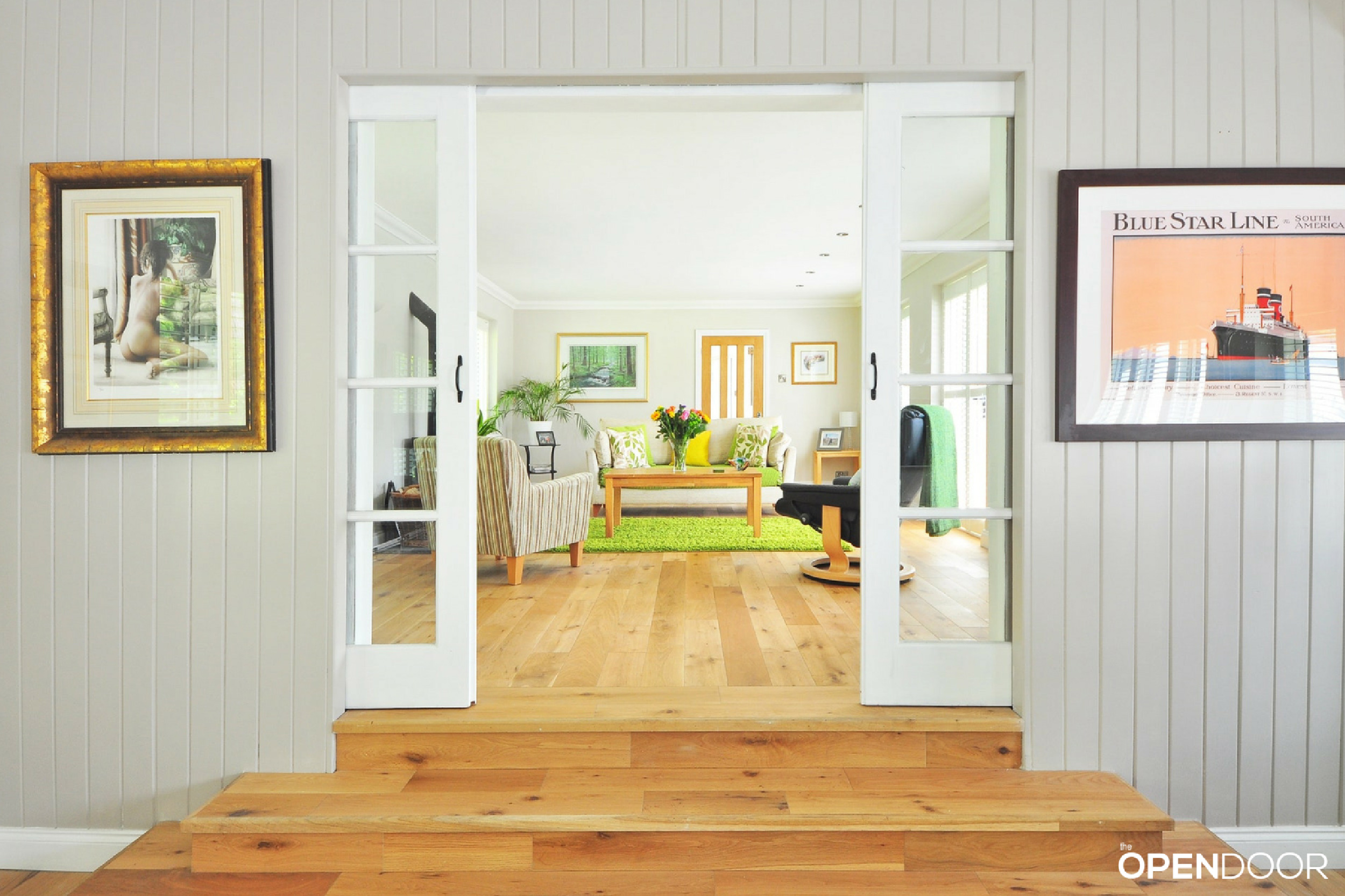 Building a new home is an exciting adventure, but it does come with challenges.
Building a new home is an exciting adventure, but it does come with challenges.
And sometimes those challenges can lead to mistakes. Don’t be that guy (or gal) who thinks he can just “wing it”.
Mistakes happen. They can be time-consuming, costly, and difficult to fix. But know this: most can be avoided.
Here’s the top 5 mistakes people make in the custom home process and how to avoid making them.
1. Blowing your budget and poorly managing your money
Budgeting and money management are just a part of life. We budget our monthly finances and expenses. We save for retirement and education. We set aside a rainy day fund for vacations. In building a new house, like any other situation, having a realistic budget and managing your money accordingly is important. So how do you start?
Plan ahead.
Planning ahead financially for your custom home project is a must. You must have a realistic budget and it must be as detailed as possible. You don’t want to panic in the middle of the project when you realize you missed a big ticket item in your budget. When in doubt, round your estimates up. Better safe than sorry. A new home that overextends your budget will feel more like a nightmare than a dream.
I’m sure you’re wondering how much you can afford to spend on a new house. To figure this out, first, understand how much you can borrow from the bank. And then second, understand how much of your own cash you want to put towards your new house. Knowing how much you can afford is a good starting point in establishing a budget. It makes planning your project so much easier because you know exactly how much you can spend.
Don’t forget to establish a slush fund or contingency in your budget. Set aside a chunk of money for the unexpected: cost overruns, changes during construction, and other unforeseen conditions. It’s smart budgeting and gives you the added reassurance that you’re building within your means. It’s your security blanket and will save you stress and headache in the long run. Trust me.
So what else can you do to better manage your money?
Don’t spend your own money first.
When people decide they want to start the homebuilding process, many decide to use their own savings first and then get a construction loan when they use up their own money. Terrible idea.
After good credit, the next most important criteria banks look at is liquidity or cash reserves when applying for a loan. If you’ve spent your savings on purchases already, you’re making it harder to get a loan with good loan conditions. The bank won’t count the money you already drained when reviewing your application.
If you’ve been using credit cards to fund part of the construction project (bad idea, also), your credit score is likely lower because you have more debt. This hurts your chances even more of getting a good loan, not to mention how costly credit card interest is.
The same theory applies to buying land before building. Only pay the minimum out of pocket and get a land loan for the rest. Paying for land out of pocket ties up your money where you can’t get to it. The best way to avoid this is to finance your land with a loan that has a low downpayment. This lets you hoard your cash until the construction loan is finished. You’ll have plenty of opportunities to spend the money later after the house is complete.
And lastly, max out the amount of money your lender will let you borrow.
Don’t borrow only the minimum amount you think you need. Borrow as much as the bank will allow. There will always be additional costs you weren’t accounting for. Having a contingency is nice, but starting out with a bigger chunk of money from the bank, to begin with, gives you more peace of mind. It can also save you money in the long run.
What about all those expenses during and AFTER you move in? What about the things not included in your budget such as moving expenses, blinds and curtains, landscaping, new furniture, or artwork? You’ll be thankful you took out a bigger mortgage when it comes time to pay for all those extra expenses, especially once you compare the interest rate of a mortgage to that of the credit cards you would have used to pay for those purchases.
And think about it: The only way to know exactly how much your custom project will cost is to finish it. You can always reconcile the proper loan amount after you move in and pay for all those extra expenses. So don’t make the mistake of borrowing the minimum amount and being forced to make additional purchases with your credit card at 18% interest rate, instead of the 3-4% of your mortgage.
2. Letting someone tell you what YOU need!
You know yours and your family’s lifestyle and needs best. Professionals can make suggestions, but they can’t tell you what you need and want. Only you can do that.
To start with, set good project goals that define what YOU need and want.
Before starting any design work, set project goals that define what your needs are. Spend time before you begin to create project goals that fit your needs and wants. These project goals serve as a beacon to help you stay focused and make the right decisions throughout the entire process.
While defining your project goals decide what you and your family specifically want and need, not what is expected of you.
Don’t succumb to societal pressure.
For some people, peer pressure and “keeping up with the Jones’s ” is a real struggle. Don’t let it be. The whole reason you’re creating a custom home is to create a place that’s tailored to YOU, not the Smith family down the street, your co-worker who seems to have it made, or your best friend who tries to convince you that you need what they have. If you don’t want a fancy dining room or a 3-car garage with a shop, then don’t have one. There’s nothing worse than building a new house that doesn’t fit your needs the day you move in and doesn’t feel like YOUR home.
Plan for your future needs, too!
Don’t forget to consider what your needs are now and years into the future if you intend to live in your new house for years to come. If children are in your future, design and build to accommodate a growing family. If you already have children who are getting older and will soon be leaving for school, plan for that. If you have aging parents or in-laws who might move in or if you plan to grow old in your custom home, think about that also.
While it’s important to design and build to suit your own needs, you should also be mindful of how appealing your home will be to future home buyers when you eventually do decide to sell it years down the road.
Design to your needs, but don’t forget future marketability and resale value.
Creating a home that is unique and tailored to you can still be achieved in a way that would appeal to other consumers. Designing a highly custom home of a style or layout that appeals only to you and maybe only a handful of other people may not be wise or sustainable.
3. Not designing the house to fit the land.
First and foremost, choose the right property to build on. It might be tempting to select the cheapest property, but there’s probably a reason it’s so cheap and still on the market. Do your due diligence and thoroughly research the property and the neighborhood before deciding to buy it.
If you’re building in a neighborhood or subdivision, don’t build a house significantly larger or smaller than the other houses.
Create a home design that fits the surrounding area.
Building too big or too small makes it harder to sell and get a good return on investment.
This is especially true if you create the largest home in the neighborhood. While it may be tempting to build bigger, it actually decreases the value of your house. When you build big, you actually increase the value of the houses around yours. At the same time, the smaller houses around you decrease the value of your house when it comes time to sell it.
Also, consider the style of houses in the neighborhood. You can create a unique home with its own character and appeal but don’t go overboard and design a house that sticks out like a sore thumb. A home that is too unique and not comparable to the surrounding homes may not sell as easily in the long run, which makes it harder to recoup your original investment.
Every property is unique. Whether it’s topography and slopes, vegetation, trees, rocks, water tables, sun paths, or views, each lot has its own distinct characteristics that should be addressed and considered when designing and siting your home. Neglecting to consider the various site characteristics can increase the cost of your project, significantly. If your property slopes in the back, you’ll want to scratch the walk-out basement at the rear. If you have huge trees on your site, you might want to strategically place your house in a way that dodges them to save the cost of removal. If you live in warmer climates, you may want to reconsider the large swaths of windows facing the direct sun unless you have considered how to control the light.
At the same time, you need to design a home that meets local zoning codes. Zoning regulations dictate the height, size, yard space, and quite possibly design aesthetic of your home. Make sure you check with your local zoning and planning department before getting too far along in the custom home process or else you could spend more money redesigning later.
Create a home that fits your specific site.
If you decide to build from stock plans or create your own design, make sure you fully understand how the house will sit on the land. Stock plans are generic in nature and therefore, aren’t specific to any particular site. There may be site nuances (like large trees or views into other houses) that make stock plans difficult to follow or may require modifications to work on your site.
Also, knowing what elevation to set the floor level at will dictate the amount of site work and excavation involved. Both of these directly impact cost.
Stock plans may necessitate additional site work to make them work on your site. For example, if your site is sloped, you may need exterior stairs to reach the house or you may need to excavate to lower the house elevation down. Architects are experienced in understanding grading topographic, and site issues that might influence your home design. It might be worth the small investment to consult an architect early on if you’re concerned about the site work implications of your stock plans.
4. Not having a good set of drawings to build from & not finalizing the whole design before construction.
People think they can save money by not having a well-documented and coordinated set of drawings. This is not true at all. They see themselves saving a few hundred or thousand bucks up front but don’t realize how many mistakes are made during construction without having solid drawings. And when the mistakes do happen in the field, guess what? You have to pay for them. Mistakes and changes cost many many times more to fix during construction as paying a little more for good drawings from the beginning.
Build from a good set of construction drawings.
Without a good set of drawings, the contractor can’t create an accurate cost of the project. He or she also can’t accurately predict the right material quality or amount of labor.
You can bet that if it wasn’t in the drawings, the contractor won’t include it in the cost (that you agreed to in the contract!). Which means you’ll pay for later in the form of change orders.
Whether you’re using an architect, designer, builder, or buy stock plans, be sure you have a good set of construction drawings. It’s critical. It’s practically worth its weight in gold.
In addition to having a good set of construction drawings, it’s a good time to note that changes made during construction are far more expensive than if made during the design phase. Much more expensive.
Figure out the whole design before building.
Something as simple as moving a door or sink to another location can create an increase in cost. Moving doors can involve structural issues and may require additional engineering work and resubmittal to the building department. Moving a sink can involve rerouting the plumbing and ensuring the drain pipe has the right amount of slope. Any rework involves more time. The right personnel has to be called and scheduled to come in and make changes and it holds up other work. If you change the bathroom tile at the last minute, the new tile may have a long lead time (meaning, the amount of time it takes to get to the site) which could delay construction. Rework and delays increase the construction schedule. So in addition to the added cost of making the changes, you’re also increasing the duration of your construction loan which almost always has higher interest rates than your future mortgage rate.
So the lesson here is: try to make any alterations and changes to the design early in the process. Making changes early during design lets your architect or designer incorporate the changes into the initial design and avoid the unnecessary costs associated with the construction change orders.
5. Not hiring the right experts.
Just like you wouldn’t trust anyone to perform surgery on you, you shouldn’t trust just anyone to design and build your custom home project. It’s a complex process, just like surgery is a complex procedure.
Spending time to research and vet any design professionals, engineers, and contractors to work on your project is paramount.
Architects are well-qualified design professionals with years of education and experience and numerous licensing tests to pass. They are the most qualified to design your home, and chances are if you’re building a custom house you’ll want to use an architect to get the home design just right. But remember: no two architects are alike and no two designs will be alike either. Choose an architect based on personality fit, design aesthetic, and experience.
If you don’t require a high level of design, the house isn’t too complex, and the building department doesn’t require one, you may choose to work with a designer to create your home design instead. Designers cost less than architects but they don’t have the extensive knowledge or experience as architects and may not be able to handle complicated projects.
Some builders also have a design team in-house. They may not be as knowledgeable as architects or work on complex design projects but are more intimately connected with the builder so they can help create an affordable design that is build-able.
Some people have success using stock plans. A majority of purchased drawings lack the level of detail and dimensions necessary to construct the house, though, so unless you have a very good contractor who has experience building from basic plans, you may find out that additional time and effort is needed to build your project, which may add to the overall construction cost.
Understand your design needs and select the best design team for the project.
Not working with a qualified design professional can cost you. As mentioned above, having a good set of construction drawings is critical, especially if you want to stay on budget. It’s up to you whom you work with to create your design, just make sure you understand the implications of your selection.
In a similar vein, all contractors are not the same, either. Getting the wrong general contractor will be a huge mistake. Here are some tips to selecting the best contractor for your project: Get referrals from people you trust. Once you have the names of a couple contractors, do your research on each company. Interview them. Ask to see some of the houses that they have built. Talk to the owners to see if they are satisfied. If a contractor doesn’t want to cooperate with you in all of this, don’t even consider him.
Choose a well-qualified contractor or builder.
A good builder will treat each project with personal interest. They will be easily accessible if you need to talk to them or have questions and they will keep you informed during the entire construction process. Some homebuilders have a passion for building projects and take great pride in choosing quality materials and qualified subcontractors.
The cheapest price rarely ends up being the best value.
This principle applies across the board for any cost on the project, but most specifically to the team of professionals you choose to design and build your project.
Choosing an architect or designer purely on cost is the wrong approach. There’s usually a reason they are the lowest. Instead, choose a design team who shares a similar design sensibility as you, that you respect, and that you feel will deliver the best design. If you’re creating a custom home, there’s nothing more important than getting the design right and on budget. Choosing the best-qualified design expert will give you lasting benefits and may actually save you money in the long run.
At the same time, choosing a contractor with the lowest bid may be a nightmare. Of course, you want to save as much money as possible when selecting your builder. But in the end, the lowest bidder will rarely build your house the cheapest. A lot of times the lowest bidder forgets to include the cost of some items, thinks they can cut corners, or is waiting to slap you with a bunch of change orders. Low bids can be legit, but thoroughly review them to make an informed decision. Don’t select the lowest bidder simply because they are the lowest bidder. Select them because you feel they would be a good fit, that they are professional, do quality work, seem reputable, and their references check out.
To Recap… Here’s the important stuff:
- Budget, plan, and manage your money carefully.
- Tailor the project to your own needs.
- Design & build to fit your lot.
- Get the whole design down on paper before construction.
- Carefully select your project team.
Don’t take this advice lightly. There’s nothing worse than making these mistakes, realizing it midway through construction, and panicking. Don’t be that guy. Follow these recommendations and you’ll be as happy as…
… pigs in mud. 🙂






